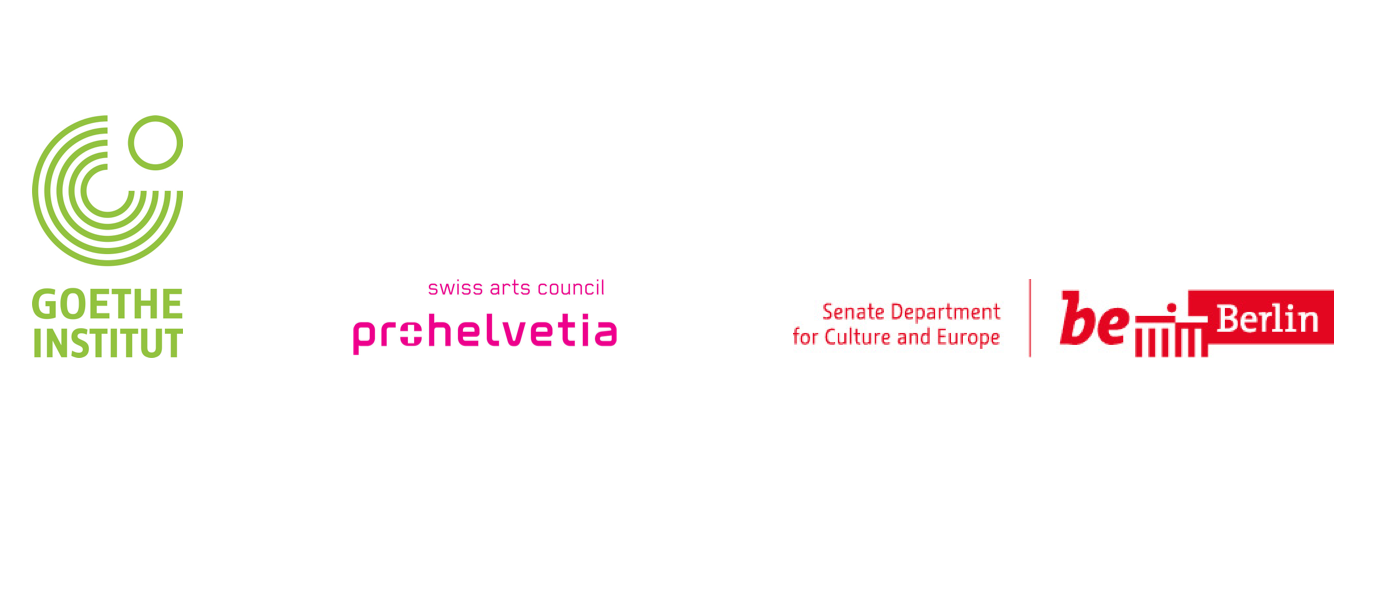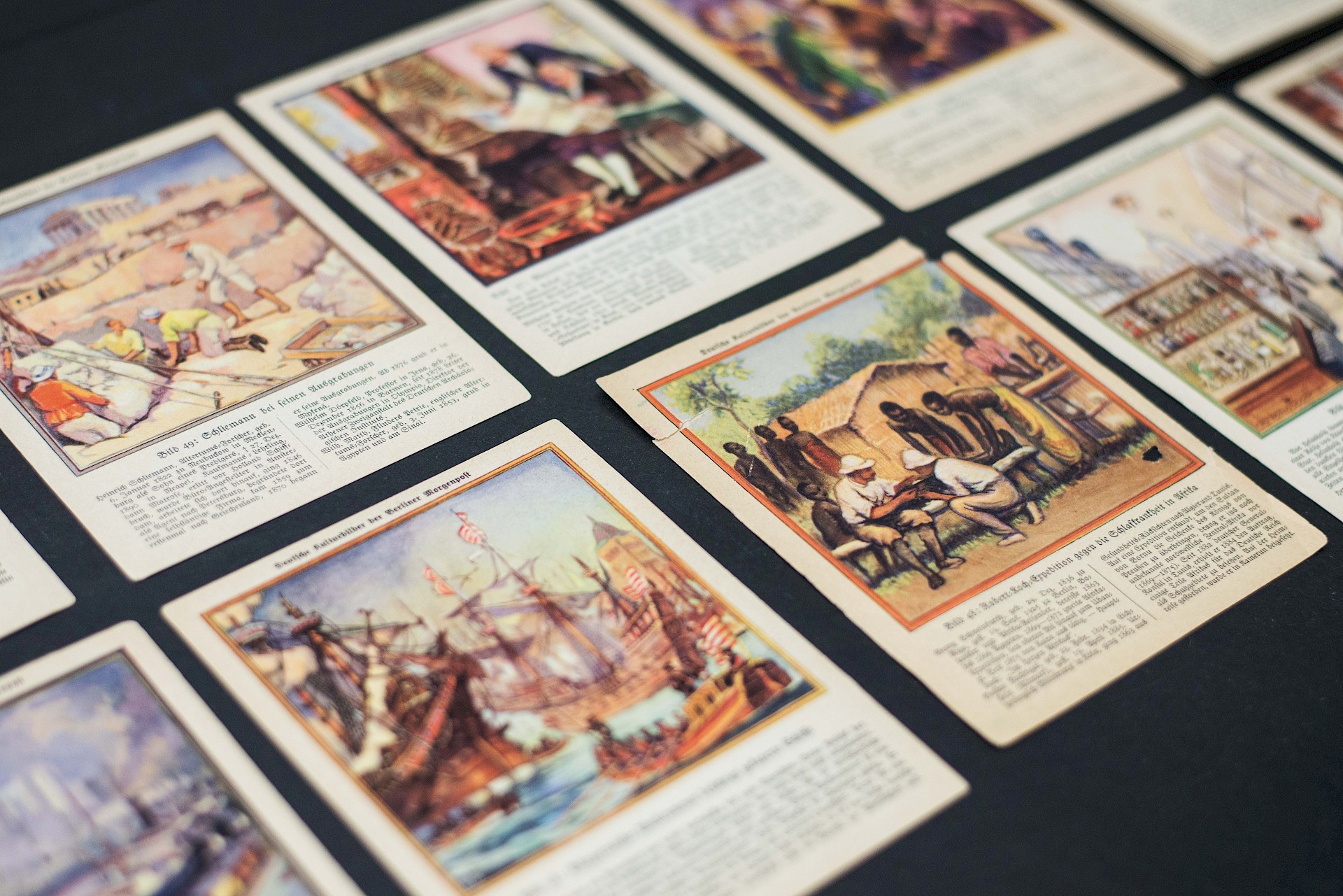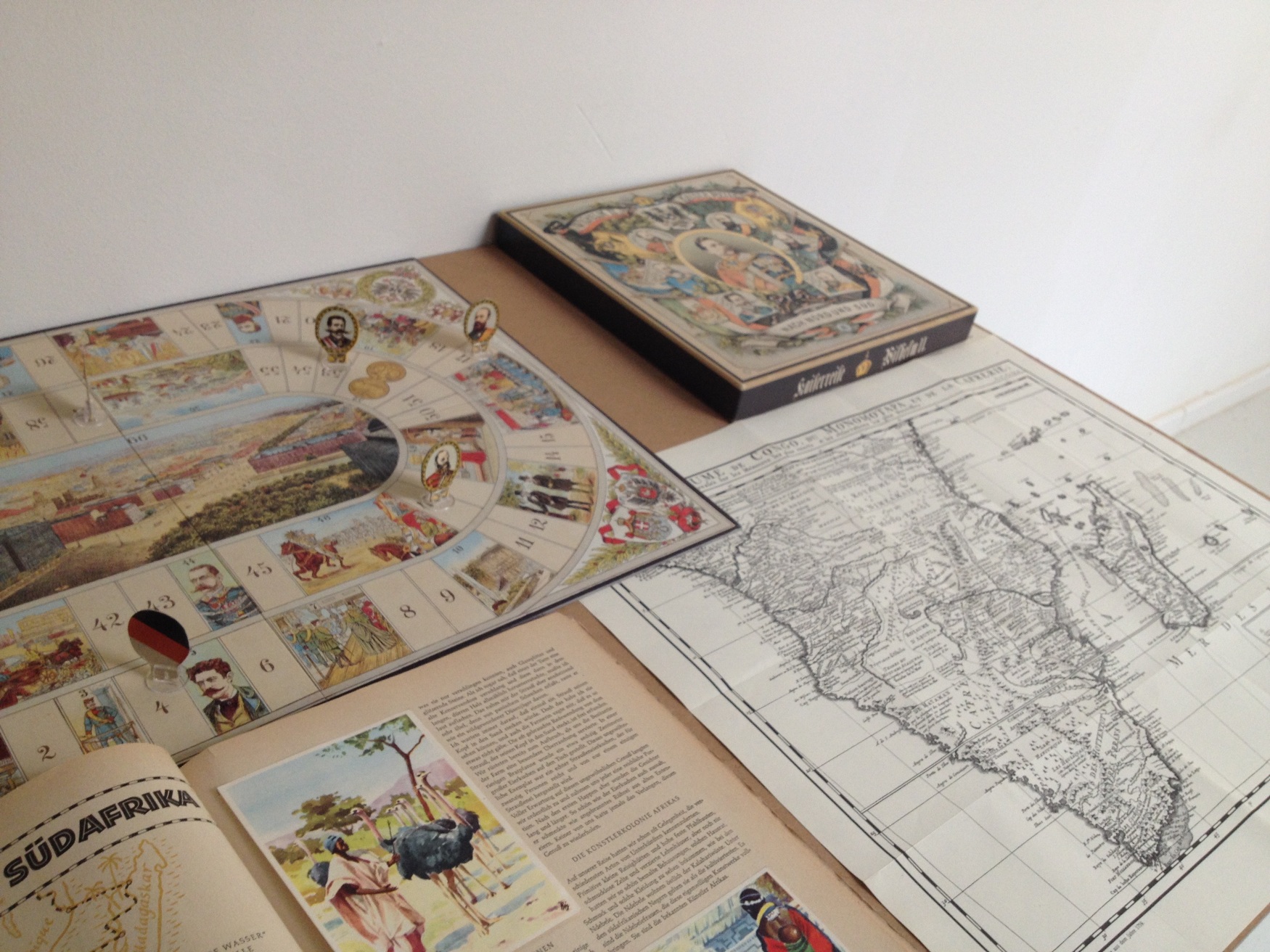Demythologize That History and Put it to Rest
Fragment N°3 Part 2 05.05.2018 17:00
WitH Ali Al-Fatlawi, Wathiq Al-Ameri and Marcio Carvalho
In front of the Otto Von Bismarck Memorial (Bismarck-Nationaldenkmal) – Tiergarten Berlin
Curators Lynhan Balatbat-Helbock, Jorinde Splettstößer and Marcio Carvalho
Project Manager António Mendes
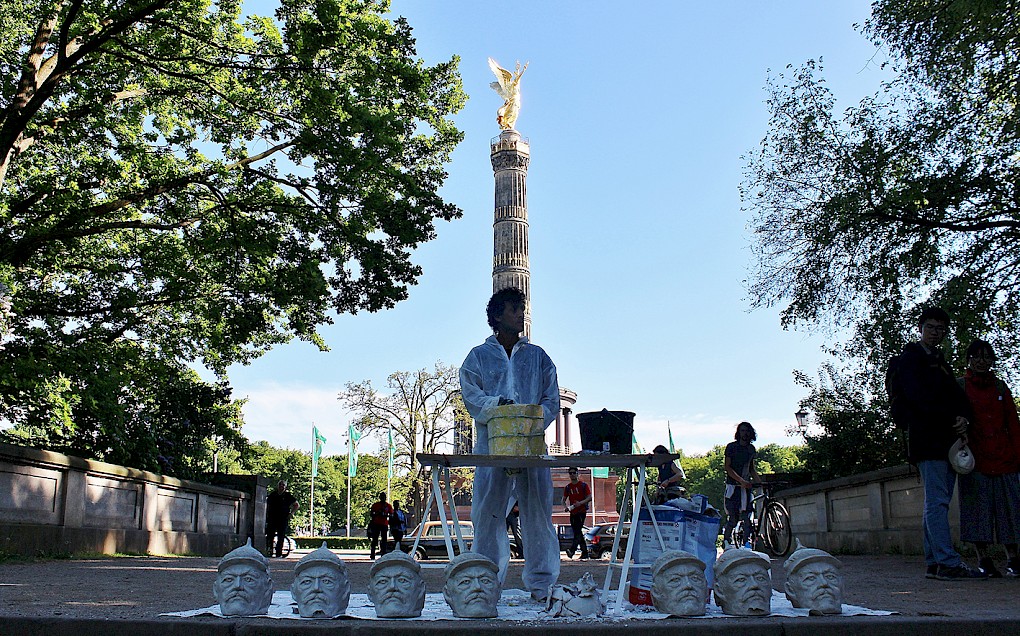
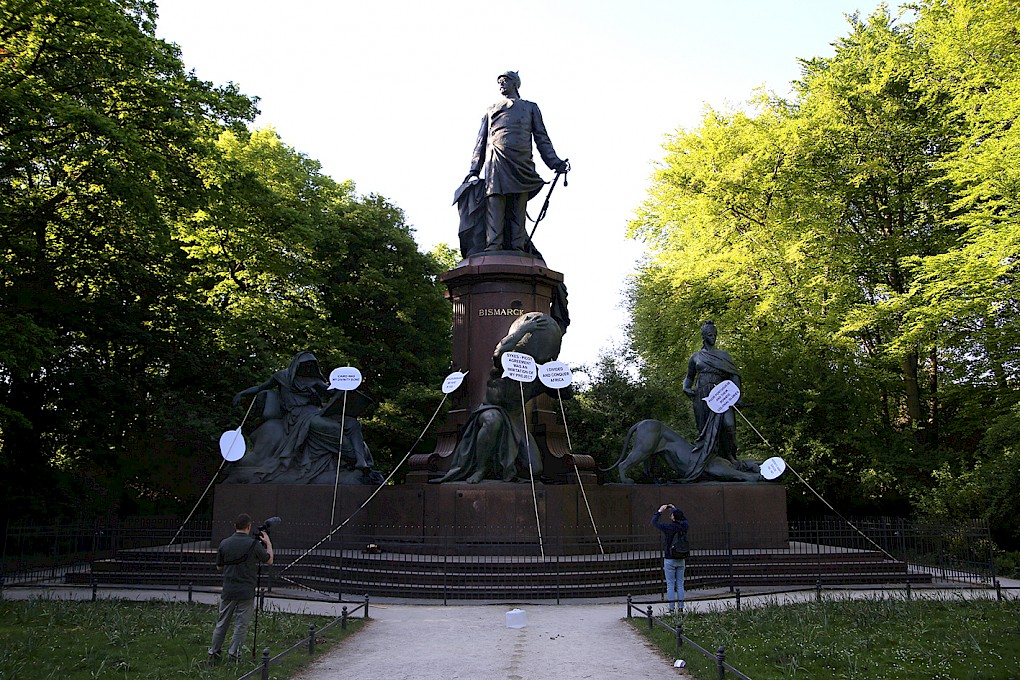
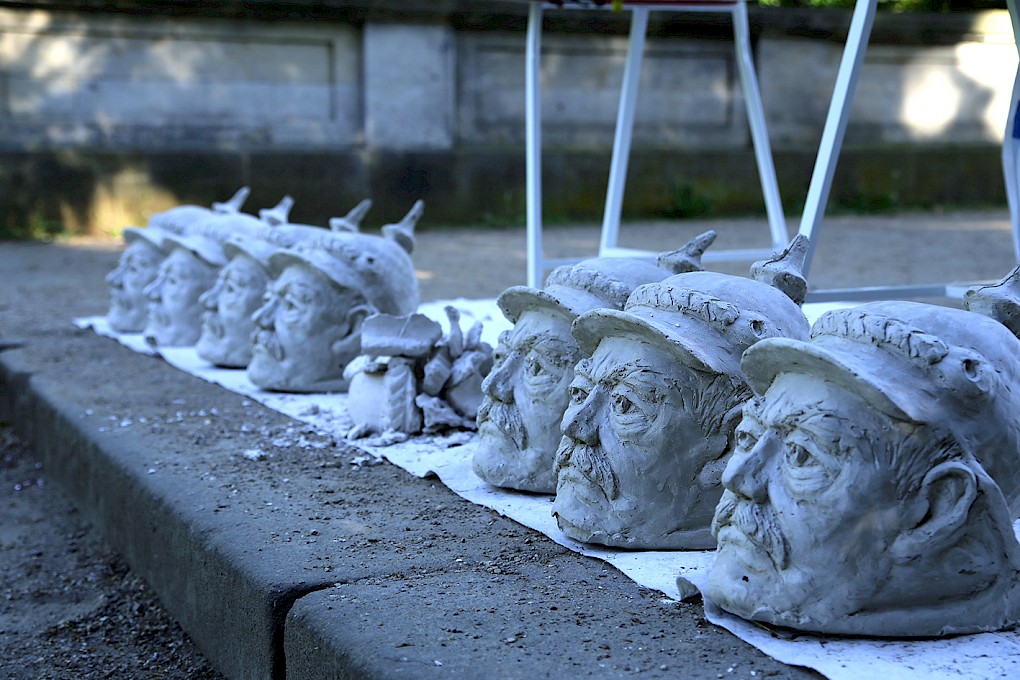



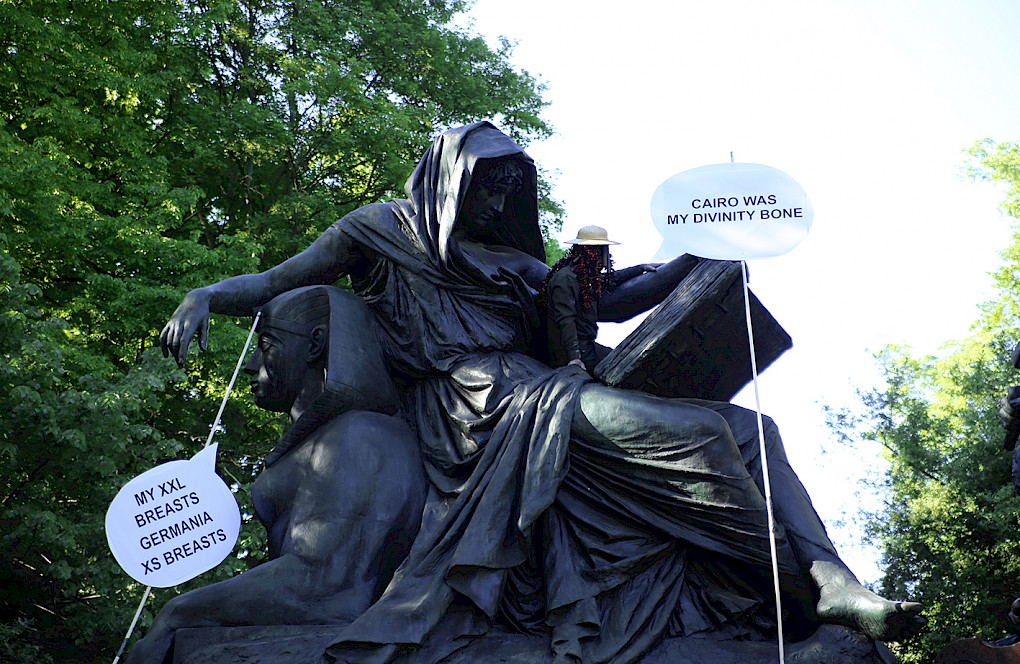
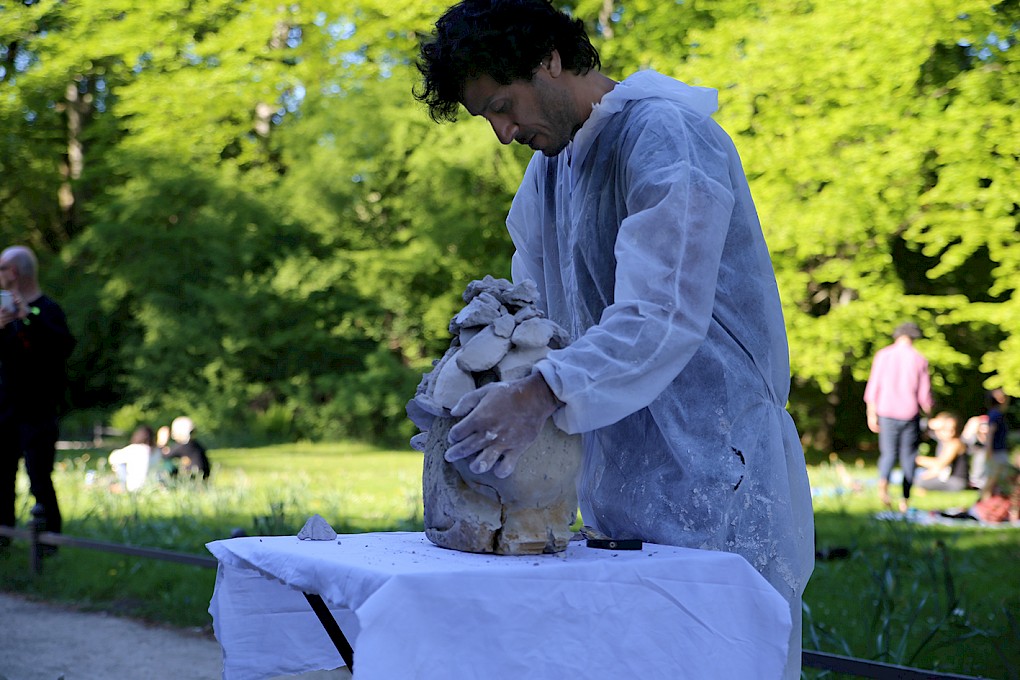
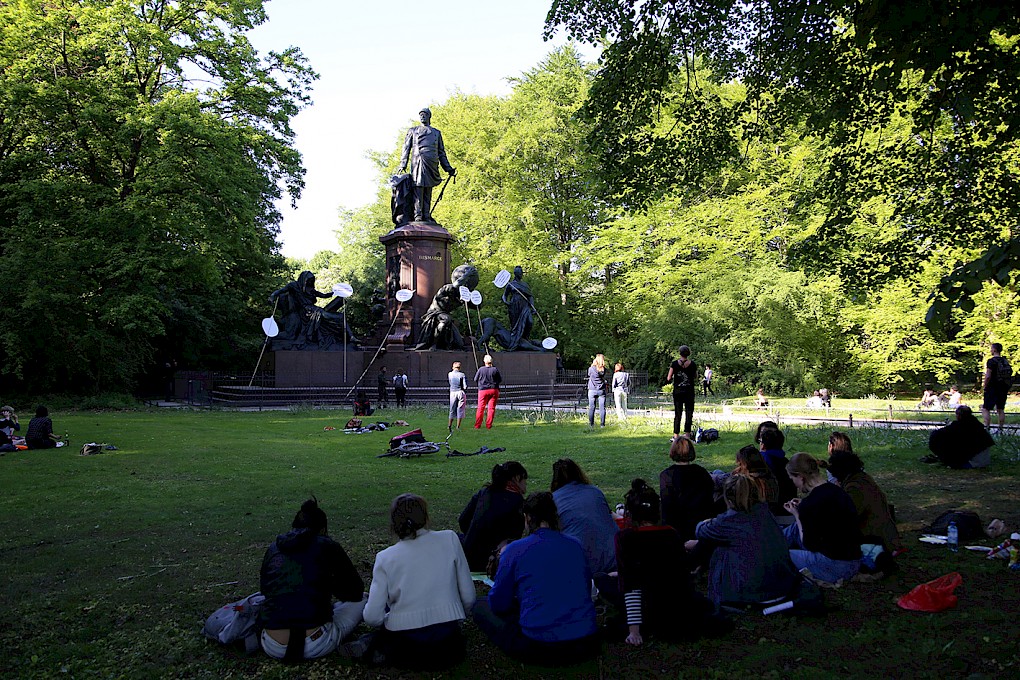
Colonial Neighbours invites you to the third edition of FRAGMENTS - a series of interventions in and out of SAVVY Contemporary's longterm archive project on German colonial history. FRAGMENTS is a series of interventions where artists, researchers and activists are invited to engage critically with colonial histories and legacies. Participators are asked to use the material in the Colonial Neighbours archive as a point of departure in creating a response which critically contributes to the context of the archive.
'Demythologize That History and Put it to Rest' aims at challenging the idea of remembrance formed by statues, monuments, street names and other Eurocentric colonial memorials and sites of remembrance in Lisbon and Berlin's public spaces where statues of, for example Bismarck, as well as monuments and memorials play a similar role on the promotion of German and Portuguese colonial achievements. Lacking a present contextualization, the objects continue to overshadow the perspective and histories of African communities and their epistemological systems and thereby commemorate a romanticized Eurocentric history. The expense there of being the oppression of Black Africans.
The project is involved in creating and presenting artistic interventions in Lisbon and Berlin's public spaces. The aim is to demythologize the narratives around these monuments and their influence on the various aspects of public remembering and forgetting, and to counter the ways they have been shaping our present thinking, experience and imagination. Is there an incapacity or lack of interest from Lisbon and Berlin's state institutions to deal with statues, monuments, memorials, street names and other forms of colonial remembrance? What romanticized understandings do we have of these objects? How can artists and art projects demythologize the colonial narratives which are celebrated as national glories?
Inspired by Edouard Glissant's assertion that history and its formation should not be left to historians alone, the artist Marcio Carvalho invited fellow artists from Angola, Cameroon, Gabon, Iraq, Mozambique and Portugal to present live performances and public discussions to counter-monumentalize these crystalized objects, to demythologize their hegemonic, western narratives and to search for other memories and other narratives. These 9 artists will focus on the monuments of two historical personalities who exerted huge influences on the colonization of Africa by the European powers during the so called Congo Conference (1884/85) in Berlin: Otto von Bismarck (Tiergarten, Berlin) and King Charles I (Palacio da Ajuda, Lisbon).
The project departed from a photo album the artist found in the Colonial Neighbors archive at S A V V Y Contemporary. The Kamerun photo album, brought from Cameroon to Germany, was passed from one generation to the next until it was given to the archive, without much information about its original owner. It consists of photographs showing landscapes, proudly presented ivory tusks, ‘exotic’ fruits and pictures of local people. Sites of colonial power and violence like the German Woermann factories and fields appear in the background of the photos. In the photo album, aspects of the private and collective visual memory intersect and many photos respond to the European desire for the ‘other’, the “exotic”; while the photos of factories, labor and houses promote the colonial achievements and the success of German colonization. In his examination of the archive, Marcio Carvalho let his thoughts wander: What if he accidentally discovered that this photo album was created by Otto von Bismarck himself? Where could the project venture if this finding was its departing point?
Ali Al-Fatlawi & Wathiq Al-Ameri:
"In our performances, we show how we cope with political conflicts in our home country. We use art as a form to deal with violence and repression. After we finish our fine art studies in Baghdad we had to run away from Iraq after an exhibition in which we criticized the state of politics in our home country. In Zurich, we completed the F + F Art and Media School and created Urnamo studio to keep forming new ideas to keep on thinking and sharing our concerns. We choose performance as our first art medium, through it we can look at the past in the present time, project new futures and create new memories."
Ali Al-Fatlawi and Wathiq Al-Ameri will present a new performance work in front of Otto von Bismarck Denkmal that bridges both the Berlin Conference and Sykes–Picot Agreement (1916) – the imposition of imperial colonial borders in the Middle East made secretly between England and France and endorsed by Russia – to reflect on the similar consequences that are still being experienced today in the Middle East and in Africa.
Marcio Carvalho:
"My art and research work is primarily focused on collective technologies and practices of remembering and how they influence individual and group memory of past events. Im Interested on the different modes of public commemorations, specially mnemonic signs and systems, that we engage with on a daily basis, to embody, represent and reenact specific narratives of the past. The public space is one of the choose grounds to show, practice and share my concerns. I believe that in the public arena artists and art projects can recreate a kind of space required by our new democratic project – one that can contest, decolonize and demythologize the hegemonic narratives that we are left to imagine our futures."
Carvalho will present a new work in front of Otto von Bismarck Denkmal – one that aims at sporting hegemonic narratives and perpetrators of a romanticized or forgotten colonial past. Strength, endurance, competition, victory, defeat and participation will be some of the ingredients used in his performance.
Demythologize that History and Put it to Rest is an art project by Marcio Carvalho in collaboration with S A V V Y Contemporary and its archive project Colonial Neighbours, and Hangar – Centro de Investigação Artística. Carvalho developed this project while in residence in the Colonial Neighbours archive and through an investigation in GEO (Gabinete de Estudos Olisiponenses) in Lisbon.
Funded by the Goethe Institut, Pro Helvetia and Senate Department for Culture and Europe in Berlin.
